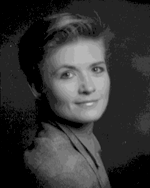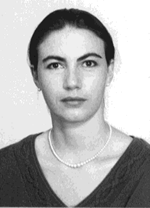
New Architecture Professors
EVDS welcomes two new professors to the Architecture programme, Loraine Dearstyne-Fowlow and Catherine Hamel.
Loraine Dearstyne-Fowlow's academic studies began with civil engineering, working primarily with calculators, and culminated in architecture, working primarily with pencils. She has worked as a civil engineer and as a graduate architect, within large and small offices in Calgary. She teaches the Structures for Architects stream of courses within Environmental Design, as well as design studio.
 Her teaching interests center around the essential relationship between
architecture and structure, developing ideas through built form, and
bringing issues arising from structural analysis into the studio. She
believes that it is critical that architectural students understand that
structural design lies not just in the realm of the engineer, but can be a
means for architects to arrive at a meaningful realization of
architectural ideas. She also believes that it is when theory meets
physical necessity that architecture can become really interesting.
Her teaching interests center around the essential relationship between
architecture and structure, developing ideas through built form, and
bringing issues arising from structural analysis into the studio. She
believes that it is critical that architectural students understand that
structural design lies not just in the realm of the engineer, but can be a
means for architects to arrive at a meaningful realization of
architectural ideas. She also believes that it is when theory meets
physical necessity that architecture can become really interesting.
Loraine has a particular interest in architecture as cultural artifact, in the relationships between poetry and function, culture and object. She plans to explore the various manifestations of these relationships through writing and design.
 Catherine Hamel's academic training includes an undergraduate degree in
Interior Design from the California State University, a professional
degree in Architecture from the Pennsylvania State University and a
Master's degree in the History and Theory of Architecture from McGill
University. She will be teaching design studio and the introductory
graphics course to first-year architecture students. One of her interests
is the role of drawing in architecture, specifically the ambivalence
between the architectural drawing and the scope of the architect's vision.
She experiments with various graphic media by freelancing as an
illustrator.
Catherine Hamel's academic training includes an undergraduate degree in
Interior Design from the California State University, a professional
degree in Architecture from the Pennsylvania State University and a
Master's degree in the History and Theory of Architecture from McGill
University. She will be teaching design studio and the introductory
graphics course to first-year architecture students. One of her interests
is the role of drawing in architecture, specifically the ambivalence
between the architectural drawing and the scope of the architect's vision.
She experiments with various graphic media by freelancing as an
illustrator.
Another interest lies in the manifestation of politics through architecture. Her experience--having lived the appalling experience of the hate and destruction of the Lebanese Civil War, and as a volunteer worker with political refugees--converges in projects on this theme. Her work looks at cities transformed by the devastation of war and the radical application of political and cultural models.
[ Top of Page | Table of Contents | Intervention | Previous Article | Next Article ]